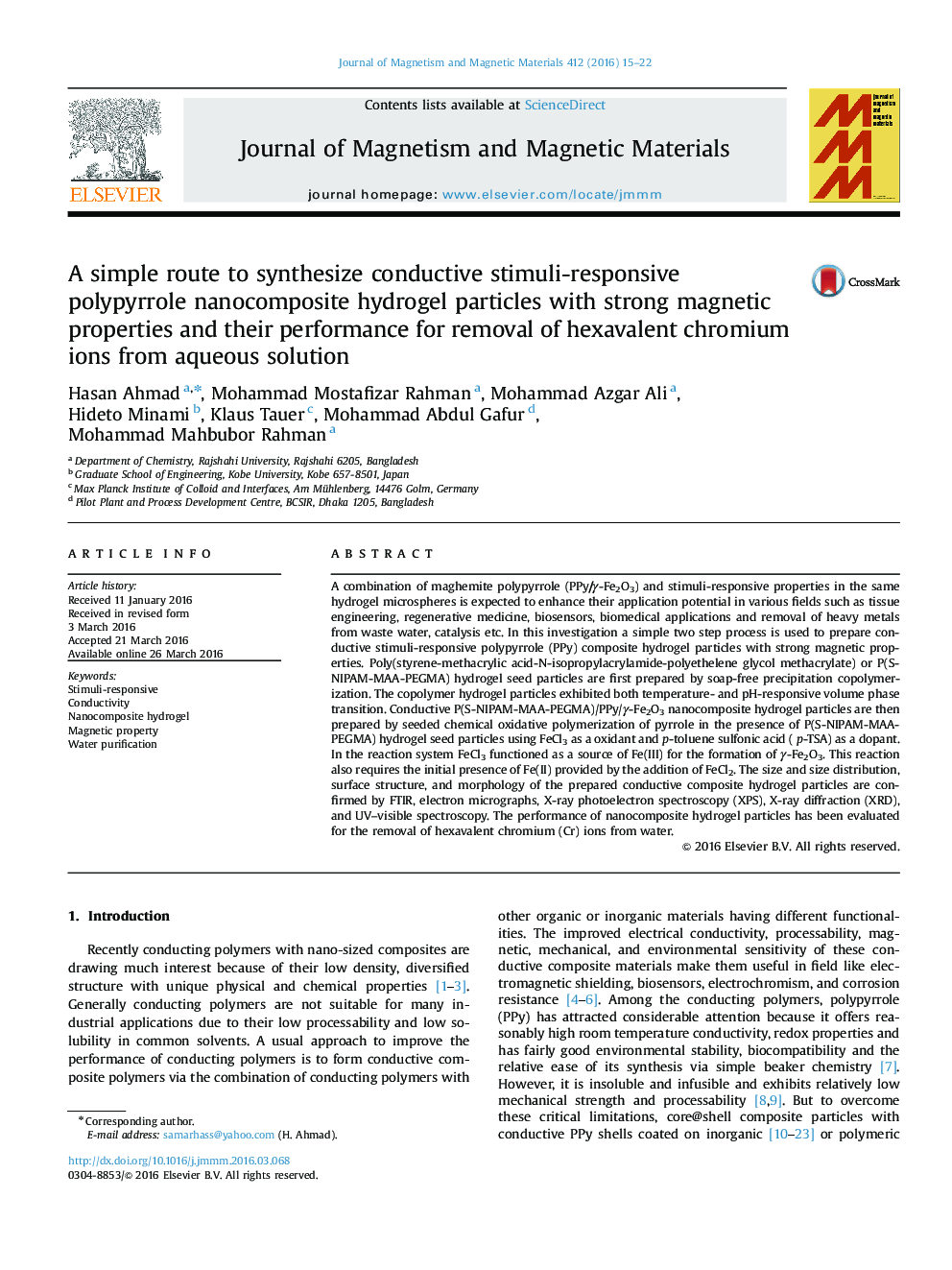| کد مقاله | کد نشریه | سال انتشار | مقاله انگلیسی | نسخه تمام متن |
|---|---|---|---|---|
| 1797916 | 1524809 | 2016 | 8 صفحه PDF | دانلود رایگان |
• P(S-NIPAM-MAA-PEGMA) hydrogel particles were prepared.
• P(S-NIPAM-MAA-PEGMA)/PPy/γ-Fe2O3 nanocomposite hydrogel particles were prepared.
• Oxidative polymerization of pyrrole and precipitation of γ-Fe2O3 occurred simultaneously.
• Conductive nanocomposite showed magnetic and stimuli-responsive properties.
• The magnetic property was used to isolate Cr(VI) from water.
A combination of maghemite polypyrrole (PPy/γ-Fe2O3) and stimuli-responsive properties in the same hydrogel microspheres is expected to enhance their application potential in various fields such as tissue engineering, regenerative medicine, biosensors, biomedical applications and removal of heavy metals from waste water, catalysis etc. In this investigation a simple two step process is used to prepare conductive stimuli-responsive polypyrrole (PPy) composite hydrogel particles with strong magnetic properties. Poly(styrene-methacrylic acid-N-isopropylacrylamide-polyethelene glycol methacrylate) or P(S-NIPAM-MAA-PEGMA) hydrogel seed particles are first prepared by soap-free precipitation copolymerization. The copolymer hydrogel particles exhibited both temperature- and pH-responsive volume phase transition. Conductive P(S-NIPAM-MAA-PEGMA)/PPy/γ-Fe2O3 nanocomposite hydrogel particles are then prepared by seeded chemical oxidative polymerization of pyrrole in the presence of P(S-NIPAM-MAA-PEGMA) hydrogel seed particles using FeCl3 as a oxidant and p-toluene sulfonic acid ( p-TSA) as a dopant. In the reaction system FeCl3 functioned as a source of Fe(III) for the formation of γ-Fe2O3. This reaction also requires the initial presence of Fe(II) provided by the addition of FeCl2. The size and size distribution, surface structure, and morphology of the prepared conductive composite hydrogel particles are confirmed by FTIR, electron micrographs, X-ray photoelectron spectroscopy (XPS), X-ray diffraction (XRD), and UV–visible spectroscopy. The performance of nanocomposite hydrogel particles has been evaluated for the removal of hexavalent chromium (Cr) ions from water.
Figure optionsDownload as PowerPoint slide
Journal: Journal of Magnetism and Magnetic Materials - Volume 412, 15 August 2016, Pages 15–22
